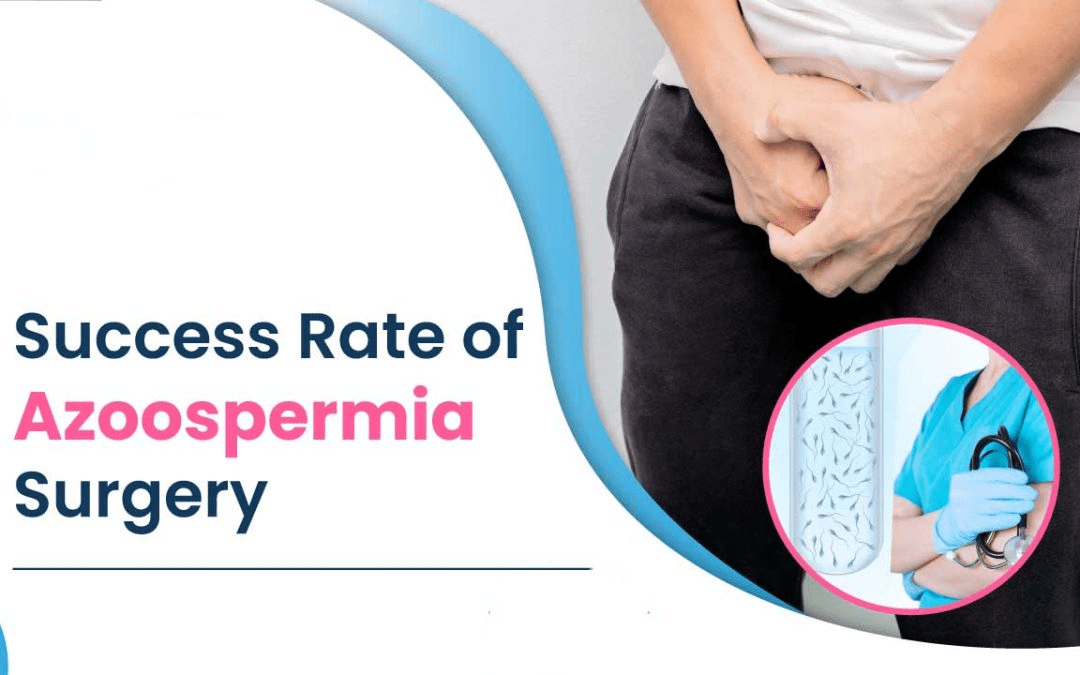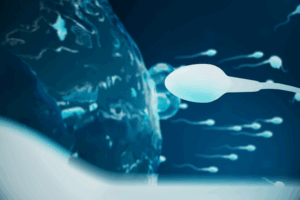
Gene therapy for azoospermia treatment
Introduction Male infertility, especially caused by azoospermia, affects millions of men worldwide. For those suffering from non-obstructive azoospermia, treatment options have been limited. However, thanks

Male infertility can feel overwhelming, especially when diagnosed with azoospermia—a condition where a man has no sperm in his ejaculate. It may sound like an end to fatherhood dreams, but it’s not. Thanks to medical advances, many men with azoospermia can still become biological fathers. This article will explore the azoospermia treatment success rate, the different types of azoospermia, diagnostic methods, treatments available, and the likelihood of achieving pregnancy with various options.
Azoospermia is a medical condition characterized by the complete absence of sperm in semen. It is diagnosed through semen analysis and affects approximately 1% of the male population and 10–15% of men facing infertility issues.
Though it sounds daunting, understanding the type of azoospermia is key to knowing the treatment options and success rates.
There are two main types:
This occurs when sperm production is normal, but a blockage prevents sperm from entering the ejaculate. Common causes include:
Vasectomy
Injury or infection
Congenital absence of the vas deferens
Scar tissue from surgery
Success Rate: Very high, since sperm production is intact. Fertility outcomes through surgical sperm retrieval and assisted reproduction are promising.
In this type, the issue lies in the testicles’ inability to produce sperm. It is often caused by:
Hormonal imbalances
Genetic issues (e.g., Klinefelter Syndrome, Y chromosome microdeletions)
Testicular damage from infection, trauma, or chemotherapy
Success Rate: Moderate to low, depending on the presence of any sperm-producing cells in the testicles.
Proper diagnosis is critical. Several tests are done to confirm azoospermia and identify the underlying cause:
Semen Analysis: Usually done twice to confirm no sperm presence
Hormone Tests: FSH, LH, testosterone, and prolactin
Genetic Testing: For chromosomal anomalies and Y-chromosome microdeletions
Scrotal Ultrasound: To assess the testicles and detect blockages or varicocele
Testicular Biopsy: To determine if any sperm are being produced inside the testes
These tests guide the treatment plan and help determine the potential azoospermia treatment success rate for each case.
Once the diagnosis is complete, the treatment will be tailored based on whether azoospermia is obstructive or non-obstructive. Here are the most common treatment options and their associated success rates.
When sperm are not found in semen but are still produced, they can often be retrieved directly from the testicles or epididymis.
Best for obstructive azoospermia
A needle extracts sperm from the epididymis
Success Rate: 80–90% for sperm retrieval
Often combined with ICSI for fertilization
Involves a needle directly into the testicle
Useful for both obstructive and mild non-obstructive cases
Success Rate: 50–70%
Advanced technique for severe NOA
Microscope used to find sperm-producing areas
Success Rate: 40–60%, but depends heavily on the surgeon’s skill
Related keywords: sperm retrieval azoospermia, micro-TESE success, testicular sperm extraction
Some cases of non-obstructive azoospermia are caused by treatable hormonal imbalances. Hormonal medications can stimulate sperm production.
hCG (Human Chorionic Gonadotropin)
FSH (Follicle Stimulating Hormone)
Clomid (Clomiphene Citrate)
Letrozole (for men with low testosterone-to-estradiol ratios)
Success Rate: 20–50%, depending on the underlying hormonal condition and treatment duration. Sometimes sperm may return to the ejaculate, allowing for natural conception.
A varicocele (enlarged vein in the scrotum) is a reversible cause of NOA. Surgical repair improves blood flow and may restore sperm production.
Success Rate:
Up to 40% of men may have sperm reappear in the semen post-surgery
Pregnancy rates range between 20–40% when combined with ART
Related keywords: varicocele and azoospermia, varicocele surgery fertility success
If sperm can be retrieved, even in small quantities, IVF (In Vitro Fertilization) and ICSI (Intracytoplasmic Sperm Injection) can be used to achieve pregnancy.
ICSI Success Rate: 35–60%, depending on the female partner’s age and embryo quality
ICSI involves injecting a single sperm directly into an egg
This is often the most viable option for azoospermic men who produce sperm but cannot ejaculate it naturally.
Related keywords: IVF success azoospermia, ICSI treatment azoospermia, azoospermia fertility options
Several factors can affect the azoospermia treatment success rate:
Obstructive azoospermia generally has a better prognosis than non-obstructive.
Female age impacts fertility success, particularly during ART treatments.
Y-chromosome microdeletions may lead to poor sperm quality or low fertilization potential.
Micro-TESE results vary significantly based on the clinic’s experience and available technology.
Yes—many men diagnosed with azoospermia can still father biological children with the help of modern medicine. While natural conception may not always be possible, the combination of sperm retrieval techniques and ART such as ICSI has made parenthood a reality for thousands.
In cases where no sperm can be retrieved, some couples consider donor sperm or adoption as viable alternatives.
Dealing with infertility, especially azoospermia, can be emotionally taxing. It is important for couples to seek:
Counseling or therapy for emotional support
Education to understand their condition and treatment options
Open communication with medical professionals and partners
Joining support groups or connecting with others who’ve faced similar journeys can also be healing.
Q1. Can azoospermia be cured?
Yes, in some cases. Obstructive azoospermia can often be corrected surgically. For NOA, hormone treatments and advanced sperm retrieval offer options.
Q2. Is IVF always necessary with azoospermia?
Usually, yes—especially when sperm is retrieved surgically. IVF combined with ICSI is the most effective method.
Q3. Can lifestyle changes improve azoospermia?
While lifestyle alone may not “cure” azoospermia, improving diet, avoiding heat exposure (like saunas), and reducing toxins (alcohol, tobacco) can support overall sperm health.
Q4. What is the cost of azoospermia treatment?
Costs vary widely. Surgical sperm retrieval may cost $2,000–$10,000, while IVF/ICSI can add $10,000–$20,000 depending on location and number of cycles.
Azoospermia used to be considered an irreversible diagnosis—but today, azoospermia treatment success rates are promising. Whether through surgical retrieval, hormonal therapy, or assisted reproductive technology, many azoospermic men can achieve fatherhood.
The journey may be complex, but hope is real, and outcomes are improving every year. By working with a skilled fertility specialist, couples can explore all options and make informed decisions about starting a family.

Introduction Male infertility, especially caused by azoospermia, affects millions of men worldwide. For those suffering from non-obstructive azoospermia, treatment options have been limited. However, thanks

Azoospermia is one of the most challenging causes of male infertility, often leaving men with few options and couples struggling to conceive. But today, an
PROLISTEM® is a Patented Formula
Copyright © 2025 Prolistem®